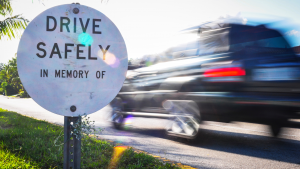Learning to drive is something which almost everyone will attempt at some stage in their lives; and while many people opt to get the ball rolling as soon as they turn 17, it can still be a daunting prospect at any age.
For some it’s the fear of the unknown and the responsibility which comes with driving vehicles, for others it’s the fear of failure – especially if that person is a little older and feels the pressure of needing to hold a license.
These are valid concerns and while you need confidence in your own ability it is something of a tradition for driving instructors to gently ease a new learner into the process by keeping them restricted to quiet roads.
An instructor will want a learner to gain the basic skills which come with driving such as finding the biting point, signalling and preparing to move off safely.
By keeping a learner on quiet roads there is less pressure and fewer hazards to overwhelm them.
No road is without its hazards but in the middle of the day on a quiet suburban road you are unlikely to find large buses, playing children or any other high-danger hazard.
The speed limit is more welcoming too, keeping the driver pegged back to 20 or 30mph whilst they learn to gauge their speed as they go.
Once the instructor feels their learner has gained more confidence and has honed the most basic points for driving they will slowly start to direct them into more populated areas on the busy streets of London.
For some it will take longer than others to get to this point but eventually everyone who sticks at their lessons will make it. Before they know it they’re out on dual carriageways and can hit 60mph if they’ve been familiarised with all the gears.
That doesn’t mean the end for the quiet road however, as once the driver is competent enough at general driving they will be taken back to quiet roads to learn manoeuvres such as the three-point turn, parallel parking and reversing around corners.
These tasks must be performed in quieter areas to take pressure off the learner and to avoid creating hazards in heavy traffic areas where road users might not be expecting to find someone testing their reversing skills.
It’s an important part of the journey to learn skills out on the road and by keeping to the quieter roads there is less risk of accidents occurring.
It avoids shattering the confidence of a fledgling learner and helps to create a stepping stone in the learning process for driving in a big city like London.





